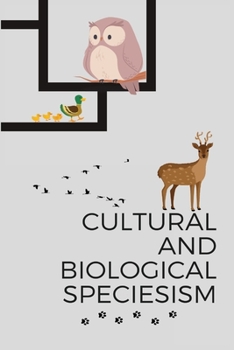Cultural and Biological Speciesism
Homo sapiens compulsively create and label categories-of things and even of ideas.
We identify and give names, for example, to mountain peaks, rocks, languages,
religions, behaviors, books, subatomic particles, elements, and living creatures. By
placing a semblance of order upon what otherwise might be inchoate complexity,
communication becomes easier. And, in science, categorization and insight into
process have historically advanced in tandem.
In the living world, the widely used hierarchy of categories extends from the
molecular and cellular subunits of individual organisms, through organs and other
body parts, to the individual, the population, the species, and on up the taxonomic
ladder through genus, family, order, class, phylum, kingdom, and then all of life, itself.
Finer divisions arise as well, such as subfamilies, superfamilies, and subspecies, all
with the same intent: to enhance communication and insight.
There, near the midpoint in the categories of life, sits what is arguably the most
widely discussed category of all, at least in biology: species. In the vernacular and
in the scientific literature, it is species that exhibit distinct traits, species that go
extinct, species we must protect, species that provide ecosystem services, species
that need to migrate under global warming if they are to survive, and species that
Darwin unraveled the "origin of". Species, species, species... Why? Does a fixation
on that category truly abet understanding and communication? If not, what is the
alternative? Those and related questions are the focus of this book.
Linnaeus focused attention on species when he invented binomial nomenclature
(a generic and a specific epithet that comprise a species name or binomen), and
Darwin reified the concept in his classic work. Species are collections of twigs on
the evolutionary tree of life that are considered different enough from other collections
to be so designated-basically different "kinds" of organisms. It is generally
agreed that sexually reproducing organisms that are sympatric (live together) without
commonly interbreeding will be considered separate species. But judgments about
allopatric populations (those geographically separated) are mostly matters of taste.
Basically, species are arbitrary stages in a continuous evolutionary process of population
differentiation. Sadly, there is a large silly literature on how to define species
that does not recognize this evolutionary fact.
Related Subjects
Medical Medical Books Science Science & Math Science & Scientists Science & Technology




